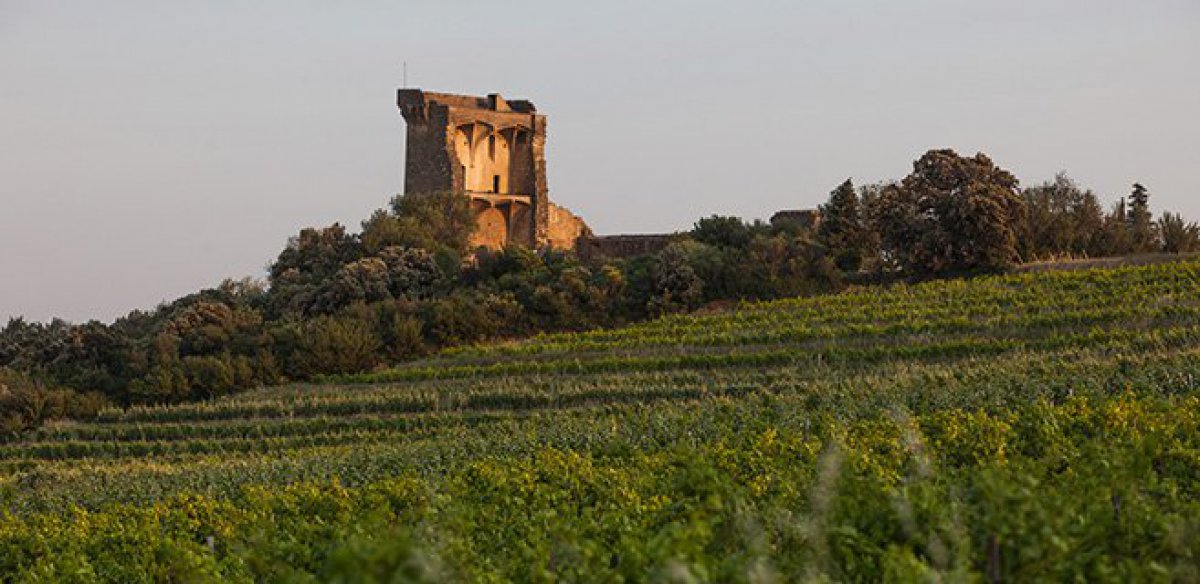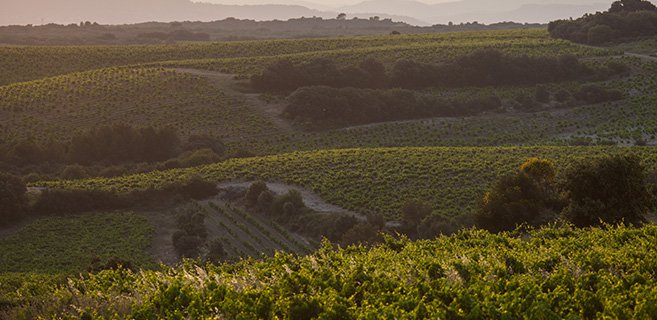
Our family has been in the Châteauneuf-du-Pape region since the 17th century and has been fully committed to making wine for five generations.
As of the 17th century, the wine-making activity of our family was testified by the purchase of a vineyard plot from the Bishop of Avignon to the north of the appellation.
Numerous generations followed on, all working in the vineyards but it was only in 1954 that Lucien Brunel created the name “Les Cailloux” to develop the business and promote the Domaine’s wine qualities and special characteristics. From that time one, it was referred to as the Domaine Les Cailloux.
In 1971, André Brunel took over the reins of the Domaine. His endless motivation resulted in a rapid growth for the Domaine: repurchasing of Côtes du Rhône and Vins de Pays vines, and launch of the infamous Centenary Cuvée in 1989. He also made some considerable changes in the vine management process by being one of the first people in Châteauneuf-du-Pape to use the ground covering method and to proceed with a non-chemical approach to wine-farming.
In 2012, his son, Fabrice Brunel, joined the team so the family history can continue.
The Estate is divided up into three appellations: Châteauneuf-du-Pape of course, but also Côtes du Rhône and Vaucluse Vins de Pays.
Our pursuit for quality, our utmost respect for the land and the drive to always provide our customers with wines they can enjoy throughout their ageing, impels us to be immeasurably meticulous during its production, regardless its appellation.
The differences are mainly the maturing times (longer for the Châteauneuf, and shorter for the Vins de Pays to make them available sooner) and the usage of vats (for Syrahs in Châteauneuf-du-Pape to mellow out the tannins, absent on the Côtes du Rhône and the Vins de Pays to maintain the fruits freshness).
We want to produce wines reflecting their region and origin while remaining elegant and wonderfully subtle.
Châteauneuf-du-Pape
The Domaine boasts 21 hectares under the Châteauneuf-du-Pape appellation, including 2 with whites, which are divided up into about ten segments. The largest are Farguerol to the north, Revès and Plan du Rhône to the south and Bois de la Ville at the top end of the village.
The soils vary with countless round pebbles but also sandy and clayey soils.
Ground topography: analysis of a segment with round pebbles
The “useful” layers for the vineyard are in tiers of about 3 metres:
- From 0 to 50 cm: mainly pebbles (80%) completed by sand. Large amount of roots.
- From 50 to 140 cm: large amount of pebbles (60%), the rest being mostly clay. A lot of fine roots and rootlets.
- From 140 to 300 cm: layer of accumulated clay but still with pebbles (about 20%).
Deep roots make it easier to trap water which is present over 2 metres under the surface and the pebbles reduce the evaporation due to heat or the Mistral. Therefore the plant is well hydrated even during hot summer weather.
Grape Varieties planted
The red grape varieties are mainly Grenache Noir, followed by Mourvèdre, Syrah and Cinsault:
- 70% of Grenaches, which, if harvested when very ripe, contribute to the strength, roundness and aromas of crushed red fruits,
- 17% of Mourvèdres which, planted in suitable soil (sandy clay) and harvested late, contribute to the structure of lively tannins, emphasizing the qualities of Grenache without making them denatured,
- 10% of Syrah which gives aromas of fresh black fruits and for amplified the colour,
- 3% of Cinsaults which gives a bit of lightness to the whole.
In white grapes, Roussanne dominates (85%) followed by White Grenache (15%).

Côtes du Rhône
The Domaine boasts about 40 hectares in Côtes du Rhône, mostly located to the east of the city of Orange and the rest being in the Gard near Lirac.
Ground topography
The upper ground layer is mostly made of modern sandy-clay type alluvial deposit. It has the advantage of being able to resist water stress in summer, therefore limiting vineyard irrigation.
The lower layers are mainly made of limestone with a strong draining capacity. The roots are therefore less deep than for Châteauneuf-du-Pape.
The climate is exceptionally sunny with an average rain-water amount of 650 mm.
Grape varieties planted
The grape varieties are made up of old Grenache vines (nearly 85%) which are over 40 years old.
The Domaine also had 1.5 hectares of Côtes du Rhône whites in the commune of Bédarrides which has been replanted with new vines of the Roussanne, Clairette and White Grenache varieties.
Vins de Pays
The Domaine also boasts 30 hectares of Vins de Pays (or PGI – Protected Geographical Indication) located mainly in the commune of Travaillan in the north of the Vaucluse.
Ground Topography
The soils are mainly composed of recent fluvial deposits located on the bank of the Aygues river.
Grape Varieties planted
The vines are mostly planted with Grenache whose yield is limited (about 45hl/h) in order to preserve a top-quality production.

